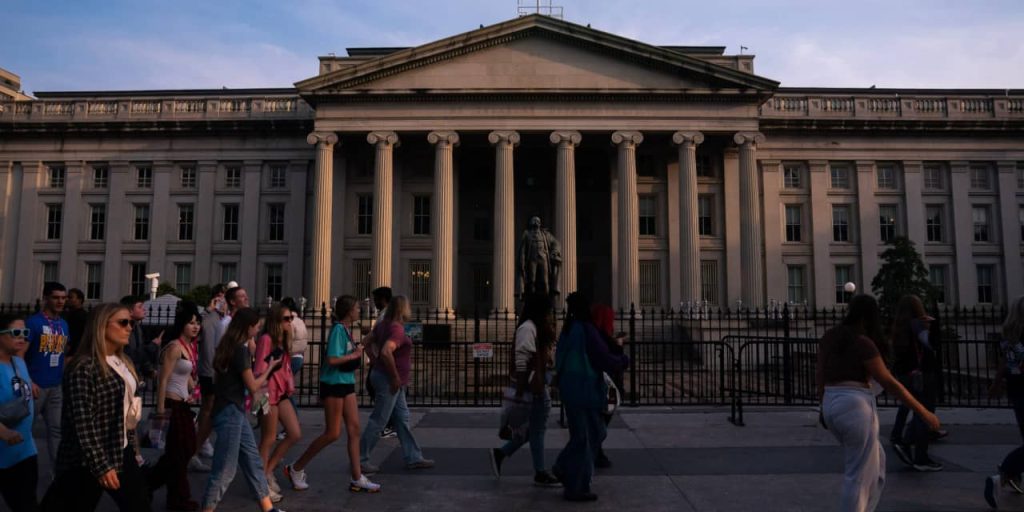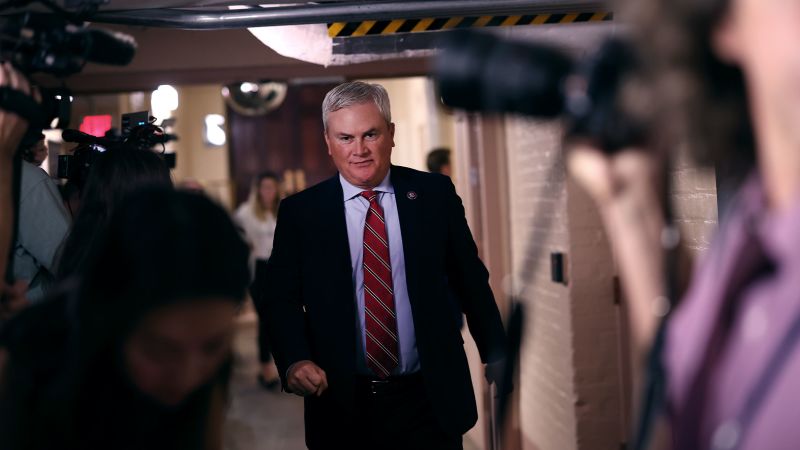Treasury yields ended little changed on Tuesday as investors looked ahead to Wednesday’s Federal Reserve policy announcement.
What happened
-
The yield on the 2-year Treasury
BX:TMUBMUSD02Y
rose 3.2 basis points to 5.069% from 5.037% on Monday. It rose just 2.3 basis points during the month of October. -
The yield on the 10-year Treasury
BX:TMUBMUSD10Y
was marginally lower at 4.874% versus 4.875% Monday afternoon. It climbed 30.2 basis points for the month, and is up for the sixth straight month, according to 3 p.m. Eastern time figures from Dow Jones Market Data. -
The yield on the 30-year Treasury
BX:TMUBMUSD30Y
fell 1.2 basis points to 5.022% from 5.034% late Monday. It advanced 31.3 basis points in October, and is up for the fourth consecutive month.
What drove markets
Investors returned to buying long-term U.S. debt, with a number of factors supporting prices and suppressing yields.
International data released early Tuesday showed that China’s manufacturing sector unexpectedly slipped back into contraction in October, adding to concerns about global economic strength.
Also on Tuesday, the Bank of Japan relaxed its grip on bond yields, calling its 1% cap on the 10-year Japanese government bond a reference point rather than a hard upper limit. With 10-year Treasurys yielding more than their Japanese peers
BX:TMBMKJP-10Y,
investors responded to hopes that the U.S. note will remain relatively more attractive.
Also helping to thwart the recent sharp spike in long-term U.S. yields was the Treasury’s announcement on Monday that it is planning to borrow less than expected during the fourth quarter. The department will announce its quarterly refunding plans on Wednesday, the same day as the Federal Reserve’s policy update.
In U.S. economic updates on Tuesday, a measure of what it costs businesses to employ workers rose a sharp 1.1% in the third quarter, keeping upward pressure on U.S. inflation. Home prices in the 20 biggest U.S. metros rose for the sixth month in a row as of August. And consumer confidence fell to a five-month low in October because of concerns over inflation, higher interest rates, and the Israel-Hamas war.
What analysts are saying
“The Fed will almost certainly leave rates unchanged, as it skips another meeting to assess the impact of higher long-end yields on economic activity,” said Marvin Loh, senior global macro strategist for State Street based in Boston. “By all accounts, the most recent round of accelerating employment and core services inflation data warrants another hike. For that matter, the latest SEP [or Summary of Economic Projections from the Fed] alone justifies a hike in our view, as the trinity of near trend growth expectations, full employment (NAIRU) and gently descending inflation represents an almost impossible outcome.”
“We think that the policy statement will be little changed, with the only update an acknowledgment of the stronger growth that emerged at the end of the third quarter,” Loh wrote in an email. “We expect Powell to restate points he made at his last appearance a few weeks ago, where they can afford to be patient in the face of rising yields, although evidence of persistently higher inflation and continued employment tightness would warrant additional tightening. Essentially, the Fed will maintain optionality for another hike, while remaining in full data dependence mode.”
Read the full article here







